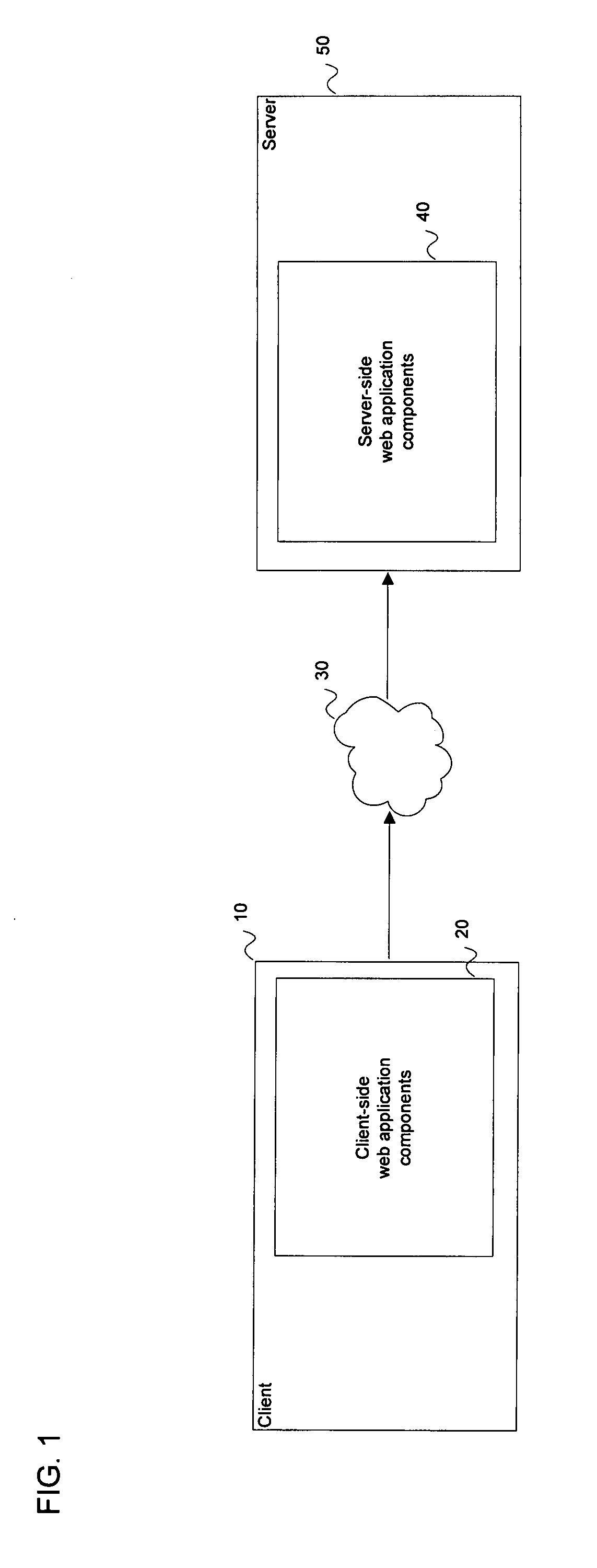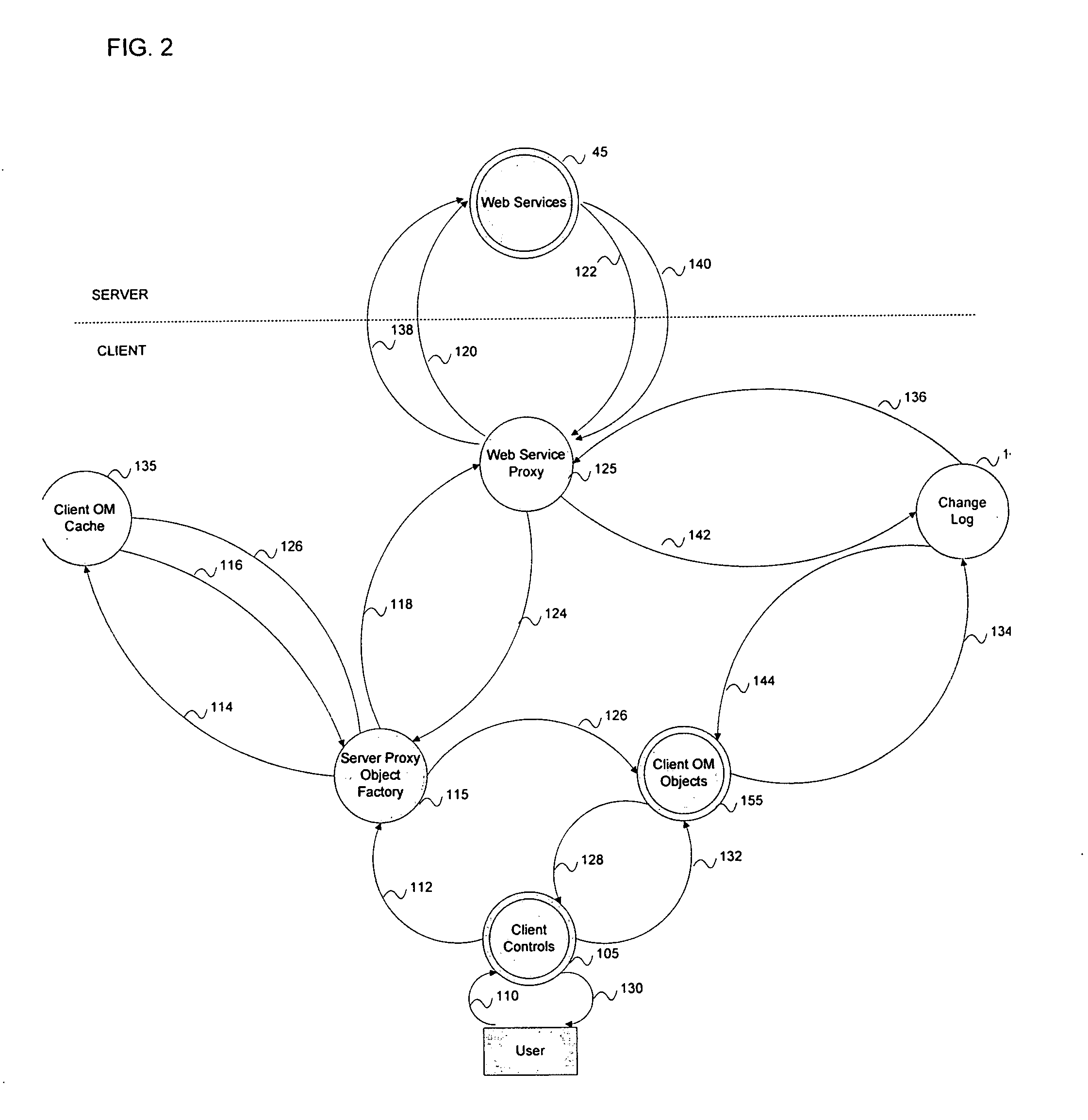Asynchronous client to server updates
a server update and client technology, applied in the field of network communication, can solve the problems of user interaction with the application, client processing by the server, etc., and achieve the effects of reducing the amount of data communicated, improving the responsiveness of web applications, and efficient use of network bandwidth
- Summary
- Abstract
- Description
- Claims
- Application Information
AI Technical Summary
Benefits of technology
Problems solved by technology
Method used
Image
Examples
Embodiment Construction
[0015]In accordance with some embodiments of the invention, communication between client and server during the execution of a web application may be batched. For example, information which might conventionally have been sent from the client to the server via multiple communications, each reflecting a single processing event on the client, instead may be sent in a single communication reflecting multiple processing events on the client. Batching client-server communication may have numerous advantages over conventional modes of communication employed by web applications, including allowing the frequency of such client-server communications to be optimized to suit operating conditions and / or desired application responsiveness. For example, the frequency may be throttled to maintain a manageable processing load on web application components executing on the server, such as by decreasing the frequency of client-server communications when the load on server-based components is greater. B...
PUM
 Login to View More
Login to View More Abstract
Description
Claims
Application Information
 Login to View More
Login to View More - R&D
- Intellectual Property
- Life Sciences
- Materials
- Tech Scout
- Unparalleled Data Quality
- Higher Quality Content
- 60% Fewer Hallucinations
Browse by: Latest US Patents, China's latest patents, Technical Efficacy Thesaurus, Application Domain, Technology Topic, Popular Technical Reports.
© 2025 PatSnap. All rights reserved.Legal|Privacy policy|Modern Slavery Act Transparency Statement|Sitemap|About US| Contact US: help@patsnap.com



